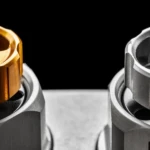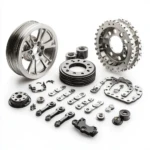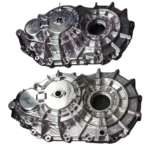As a leading manufacturer of precision parts, Excellent Light has extensive experience in providing top-notch CNC machining services. A key aspect of CNC machining is dry operation, which plays a crucial role in ensuring the quality and accuracy of the final product. In this article, we will dig into the world of CNC Dry Run and explore its meaning, importance and application.
CNC Dry Run refers to the process of testing CNC programs or machine settings without actually cutting or processing any material. This step is essential to verify the accuracy of the program, check for any errors or collisions, and ensure that the machine is properly set up for the machining process settings. By performing dry runs, manufacturers can identify and correct any problems before performing actual machining, minimizing the risk of errors, machine damage or operator injury.
The dry-running process involves a simulated machining process in which the CNC machine undergoes cutting, drilling or milling actions without actually interacting with the material. This allows the operator to visualize the machining process, check for any interference or collisions, and verify that the program is executed correctly. By doing so, manufacturers can ensure that the final product meets the required specifications, tolerances and quality standards.
The importance of CNC running cannot be exaggerated. It helps prevent expensive errors, reduces material waste, and minimizes the risk of machine damage. Additionally, it enables manufacturers to optimize their processing processes, increase productivity and increase overall efficiency. By incorporating dry runs into their machining workflows, manufacturers can ensure that their products meet the highest standards of quality, accuracy and reliability.
In addition to practical applications, CNC Dry Run also has a significant impact on the entire manufacturing process. It allows manufacturers to fine-tune their machining procedures, optimize tool routes and improve surface finishes. Through dry running, manufacturers can produce complex parts with high precision, accuracy and consistency.
In short, CNC Dry Run is a key component of the processing process, ensuring the accuracy, quality and reliability of the final product. By performing dry runs, manufacturers can identify and correct errors, optimize their machining processes, and produce high-precision parts with consistency and accuracy. As a leading manufacturer of precision parts, Light Light understands the importance of CNC Dry Run and incorporates it into our machining workflow to ensure our products meet the highest standards of quality and accuracy.
FAQ:
Q: What is the purpose of CNC Dry Run?
A: The purpose of CNC Dry Run is to test the CNC program or machine settings without actually cutting or machining any material, verifying the accuracy of the program, checking for errors or collisions, and ensuring the correct machine settings.
Q: Why is CNC Dry Run important?
A: CNC Dry Run is important because it helps prevent expensive errors, reduce material waste, minimizes the risk of machine damage, and enables manufacturers to optimize their processing processes, increase productivity and increase overall efficiency.
Q: What are the benefits of incorporating CNC Dry operations into the machining workflow?
A: The benefits of incorporating CNC Dry operations into the processing workflow include improved accuracy, quality and reliability of the final product, optimized processing processes, reduced material waste, and improved productivity and efficiency.
Q: Can CNC Dry Run be used in all types of processing processes?
A: Yes, CNC Dry Run can be used in various types of machining processes including milling, turning, drilling and grinding.
Q: How often should CNC drying be performed?
A: CNC dry runs should be performed regularly, ideally before each machining operation to ensure accurate procedures, correct machine setup, and final product meets the required specifications and quality standards.
















